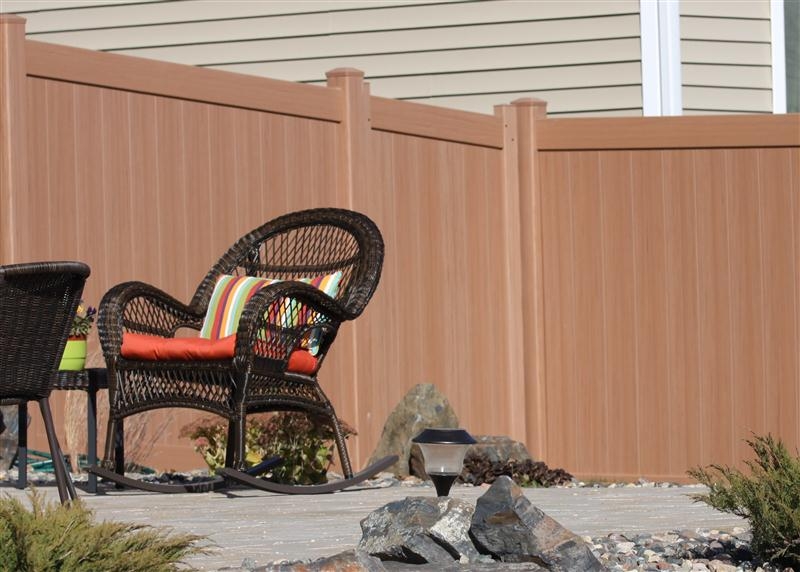In the early 1980s, fence manufacturers introduced PVC — or vinyl — for fencing, targeting farmers, ranchers and horse farm owners seeking a low maintenance, durable fencing material.
In addition to that durability, PVC fencing allowed manufacturers to offer lengthy warranties, prefabricated styles and a lightweight fencing material that is easy to install. As the fences increased in popularity, manufacturers improved performance of PVC as fence material.
Those improvements led to PVC being introduced as a material for residential fences and as homeowners consider various fence materials they likely examine the pros and cons of vinyl fencing.
The advantages of PVC fencing material include:

- Over time, materials have been introduced into the manufacturing process to keep the fence color from fading or the white from ‘yellowing,’ extending the attractiveness of the fence.
- Aluminum has been added inside the previously hollow fence post and some panels to increase the durability and strength.
- Vinyl fencing is unaffected by insects or rot, and shouldn’t be painted, making it low maintenance. Only occasional washing is necessary to ensure mold doesn’t build up. This reduces the ongoing cost of the fence.
- Today’s PVC fencing comes in a variety of styles and colors and can be manufactured with a simulated wood grain.
- PVC fencing comes in prefabricated panels, making them easier to install. The light-weight material makes them easier to work with on site.
While there is much to weigh in favor of PVC fencing, there are also comparative disadvantages. Among them:
- Vinyl fencing isn’t as strong as wood or chain link fences. It can’t withstand direct impact as well as wood or provide flexibility upon impact like a chain link fence.
- In most cases, the fence pieces snap together meaning they aren’t attached with nails, screws or bolts. This makes PVC fences less secure as other types of fencing, allowing pieces to detach and possibly break.
- Despite improvements in the manufacturing, PVC colors will eventually fade or yellow with prolonged exposure to direct sunlight. The fence can also appear fragile or flimsy compared to other fence types.
- Extreme temperatures can also make the vinyl brittle, making it susceptible to cracking or breaking.
- Lastly, the fence is made of plastic. Even with some percentage of recycled material, the fence is still viewed as less environmentally friendly than alternative fence materials.
If you have questions about PVC fencing don’t hesitate to contact a professional at Midwest Fence for a free consultation. Call 651-451-2222.
In our next post we will examine the pros and cons of chain link fences.
